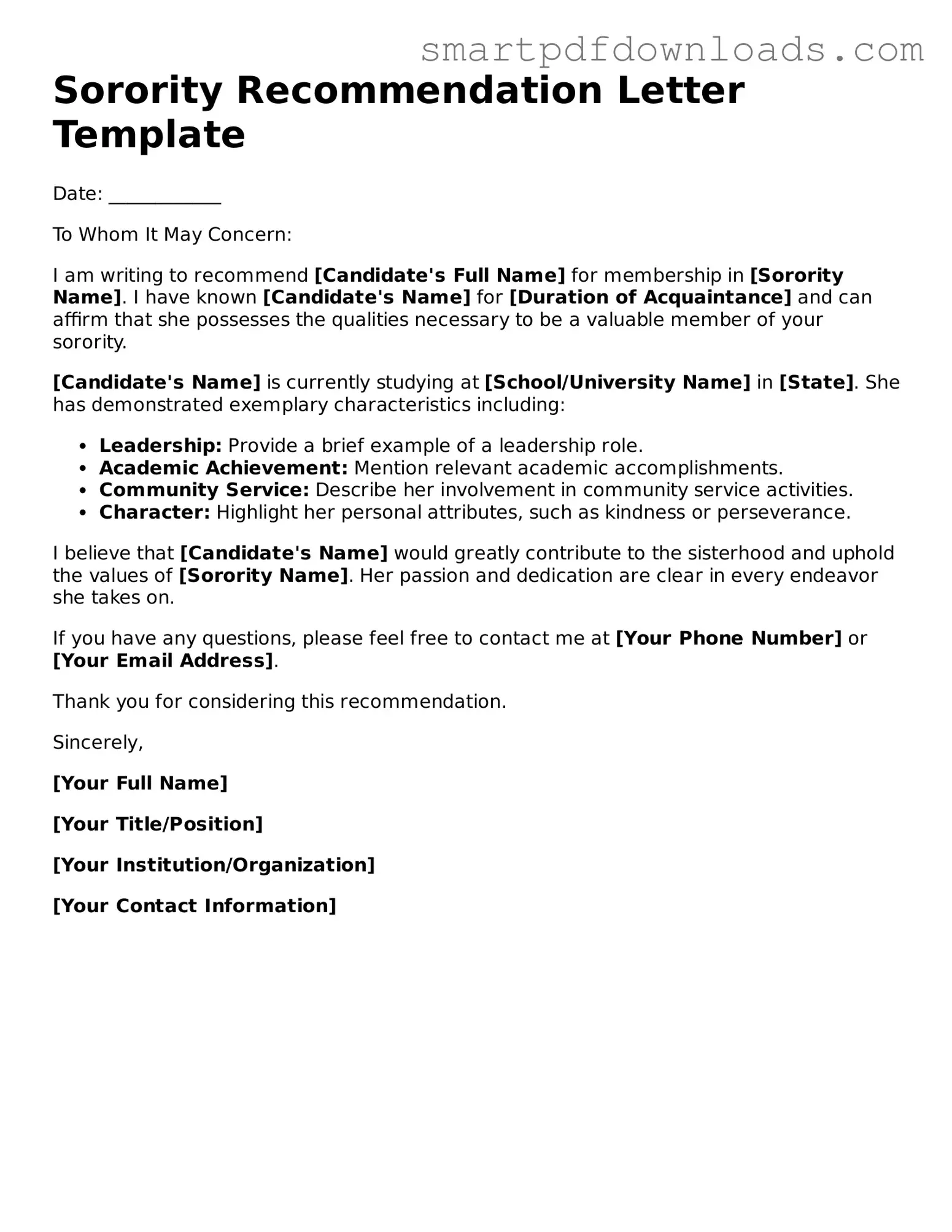Free Sorority Recommendation Letter Form
The Sorority Recommendation Letter form serves as a crucial document in the sorority recruitment process, providing insight into a potential member's character, achievements, and fit within the organization. This form is typically completed by current sorority members or alumnae who know the candidate well. By offering a personal perspective, the recommendation letter can significantly influence the candidate's chances of receiving an invitation to join a sorority.
Edit Sorority Recommendation Letter Online
